Are you losing games because your opponents seem to read you better than you read them? Poker players who master how to read people in poker gain a key edge by noticing betting patterns and nonverbal communication.
In this post, you’ll learn seven clear poker tells and simple ways to spot bluffs or strong hands at any table—live or online. Read on to start winning now!
Key Takeaways
Poker tells are small clues from body language, speech patterns, or betting habits. Physical signs like shaky hands or deep breaths often mean strong cards; forced speech and tense posture suggest weak cards.
Online poker lacks physical cues. Betting speed matters a lot—slow calls might signal uncertainty with weaker hands; quick calls can show players chasing straights or flushes, noted clearly at PokerStars games in 2024.
Poker legend Doyle Brunson emphasizes reading player behavior over card strength: “Poker is a game of people.” Frequent pauses before big bets or repeatedly touching chips might indicate bluffing habits to watch carefully.
Players sometimes fake nervous acts (finger tapping, head scratching) when holding decent but not great cards like low pocket pairs. This trick misleads rivals into thinking they have weak hands and helps win pots more easily at platforms like WPT Global with bonus matches up to $1,500 in 2025.
By 2025, advanced technology may detect detailed eye movements and heart rate through AI-based cameras. Traditional tells such as sweaty palms will fade away; players must focus on digital signals instead for winning strategies online.
Table of Contents
Understanding Poker Tells

Poker tells give clues to a player’s cards through small actions or words. Reading people well can boost your poker strategy and help spot deception at the table.
Physical tells

– Physical tells give big clues in live poker if you pay close attention. Watch a player’s body language to spot signs of strength or weakness: trembling hands while placing bets, relaxed lips or a wide smile often signal strong cards.
Look out for minimal blinking, deep breaths, and an increase in blood pressure—these physical hints also indicate confidence and power behind their bets on community cards.
– You can learn a lot from how someone handles their poker chips or speaks at the table games too. Forced speech that comes out fast, high-pitched, or unclear usually means they’re bluffing with weak hands like low pairs.
I’ve seen pros like Daniel Negreanu closely observe emotion and attention shifts during no limit hold’em matches to figure out opponents’ next moves—it’s part reason and part deception (similar skills help online at your Stay Casino login).
Verbal tells

Poker talk can give away a player’s hand if you listen close. Players who speak too much, offer lots of details, or mention pot odds often try to hide weakness with all that chatter.
A player acting casual—or even joking lightly about being “on tilt”—can point to strength instead of worry. Short replies, clear speech, and calm statements tend to mean confidence in their Texas Hold’em cards.
Watch out for defensive tones or pauses before bets—they signal doubt and weak holdings more than strong hands. Some players use fake excitement or sudden silence to mislead you about their hand’s power; spot these attempts by noting changes from their usual style on sites like pokernews.com streams and at live tables.
The copyright holder of well-known poker books even points out how tricky verbal tells in poker can be since they change based on a player’s habits and skills at setting traps through words alone.
Common Poker Tells

Knowing common poker tells can give you an edge at the table, helping you spot bluffs or strong cards. Sharp players notice subtle clues—like shaky hands moving chips or sudden quiet behavior—to gauge their opponents and gain advantage.
Signs of a strong hand

Players with strong poker hands often show clear signs through body language and betting actions. The most common physical tells include trembling hands as adrenaline kicks in, relaxed lips, and a wide smile indicating confidence in their position.
They lean back comfortably in the chair, place chips deliberately on the table, or maintain deep eye contact—sometimes paired with noticeably wider pupils.
Other reliable tells involve breathing patterns: players may take deep breaths or breathe quicker from excitement when holding one of the best hands in poker.
You might also spot eagerness to bet through quick gestures toward their chips or hear it clearly expressed via calm yet firm speech patterns—all solid indicators that can help you read a tell in poker games with improved accuracy.
Signs of a weak hand
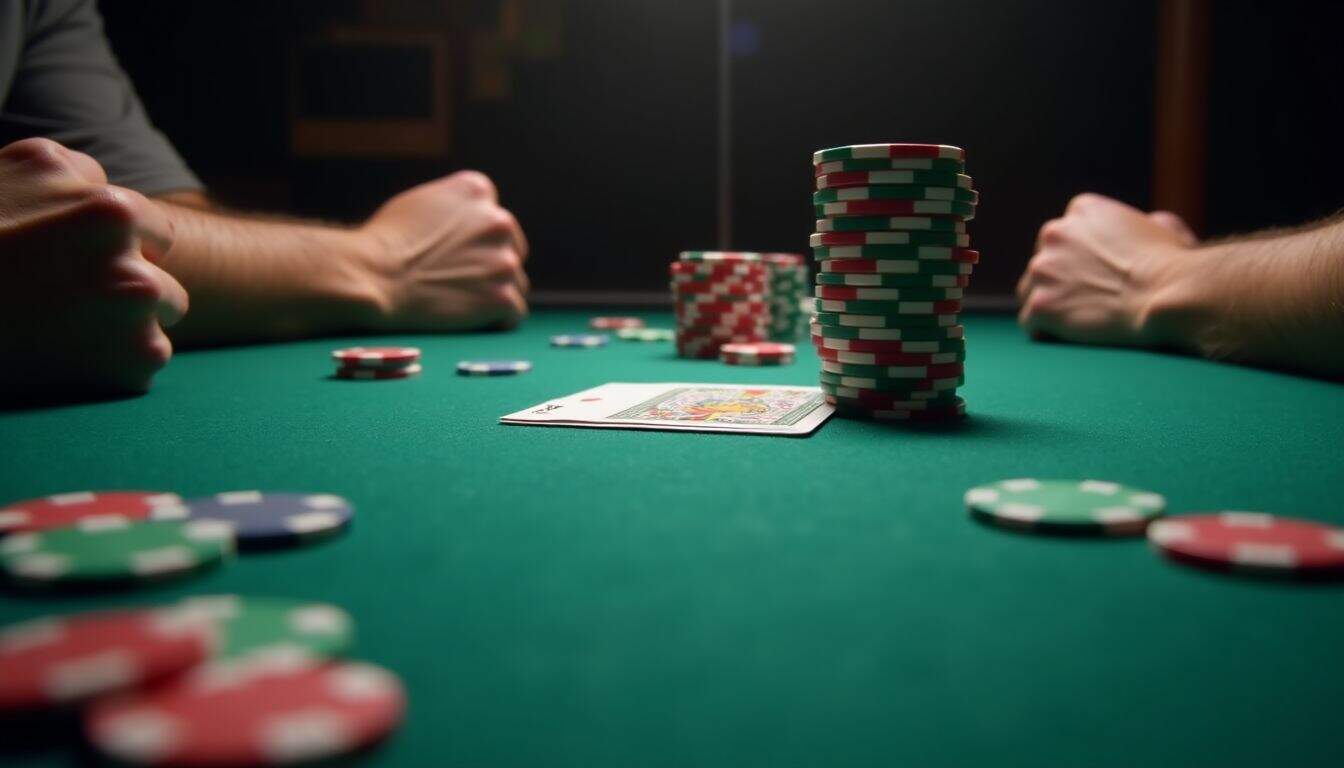
Strong hands often show calm and control—but weak ones are different. Watch closely for forced speech, uneven tone, or sudden high pitch—these can point to weakness. Guys with weak cards might freeze up, hold their breath tightly, or slam poker chips down instead of smoothly sliding them forward.
Body language also gives you clues about poor hands. Nervous men may bite nails or cross arms in a self-hug. Facial muscles could tense up; lips press together hard; eyes dart around the table quickly.
They sometimes try hiding shaking fingers beneath the edge of the poker table to stop rivals from spotting tells.
The body never lies. — Poker legend Doyle Brunson
Online Poker Tells
Online poker tells differ greatly from live play since physical cues are out. Instead, look closely at betting patterns and timing—these show key clues about a player’s hand strength.
If your opponent waits long before calling your bet, it’s often because he’s unsure or holds weak cards like bottom pair or ace-high. Quick calls typically hint at players chasing draws like straights or flushes—something I’ve often noticed on PokerStars games myself in 2024.
Still, be cautious with timing signals; sometimes opponents take longer due to home distractions or chatting online between plays. To read people well at tables on sites such as GGPoker and 888poker, always blend careful observation of betting styles with other habits you notice during the game—not just reaction time alone.
How to Improve Your People-Reading Skills in Poker
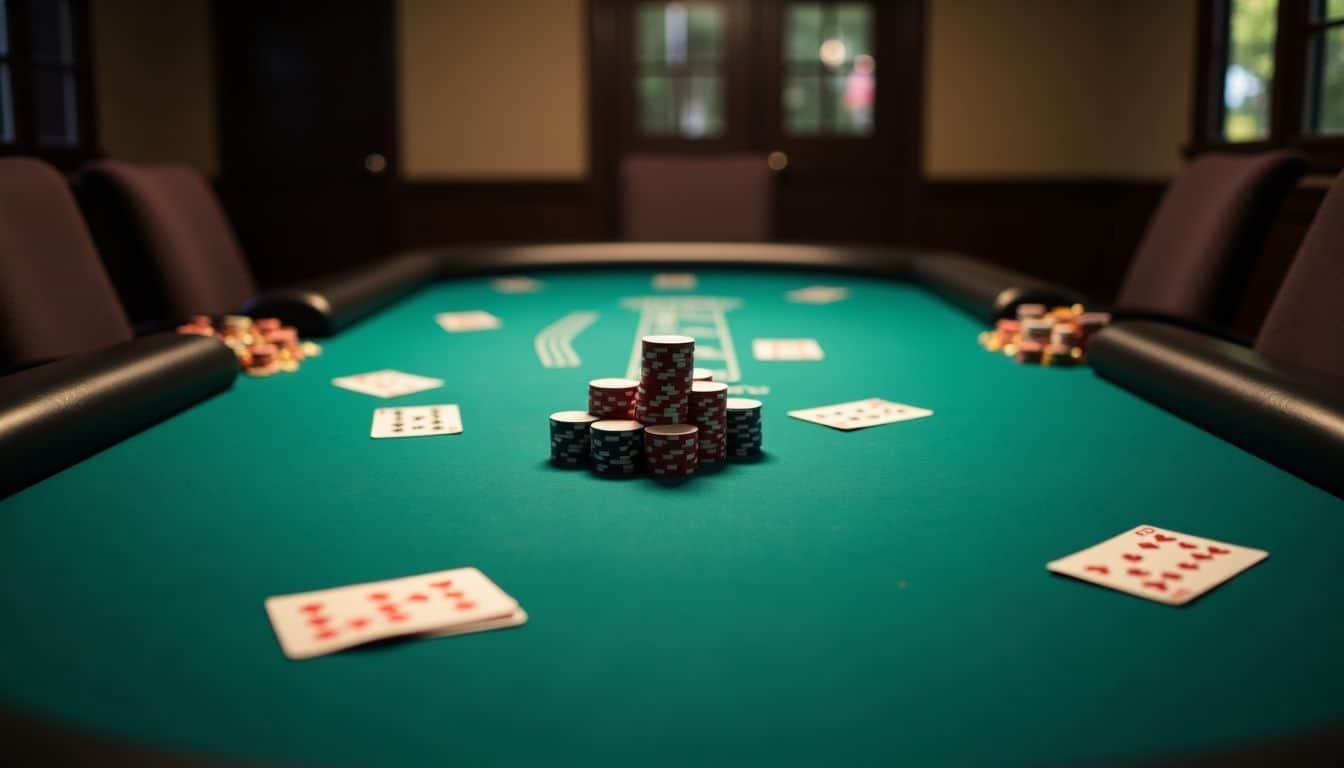
Spotting subtle body language can boost your poker game—where every movement tells a story. Pay close attention to betting patterns; habits often reveal more than players realize.
Observing body language

Body language reveals key poker tells to read your opponents better. Eye movements are a good place to start—increased blinking or rapid glances often signal nervousness and weak hands, while calm eyes suggest strong cards.
Posture changes count too: a player leaning forward usually feels confident about his hand, but crossed arms point to caution or defensiveness. Watch closely for nervous habits like fidgeting, tapping fingers on chips, shifting in chairs, or touching faces—these cues can tell you he’s bluffing or uncomfortable with what he holds.
Adjustments in sitting position matter as well; players often sit straighter when dealt strong cards and slouch slightly if their hand lacks potential. Poker pros rely heavily on these small clues because noticing clear patterns offers an edge at any table.
Recognizing patterns in behavior

Watching how a player moves or acts can reveal hidden clues—but patterns in behavior tell you even more. Players often fall into habits without thinking, like always pausing before big bets, fiddling with chips when bluffing, or sitting back after getting good cards.
These repeated behaviors give away their hand strength over time. As poker legend Doyle Brunson said:
Poker is a game of people—it’s not the hand I hold; it’s the players across from me.
Spotting these consistent habits helps you predict your opponents’ intentions and boosts your decision-making at critical moments during the game, giving you a strong strategic advantage at tables online and offline.
Setting Up False Poker Tells
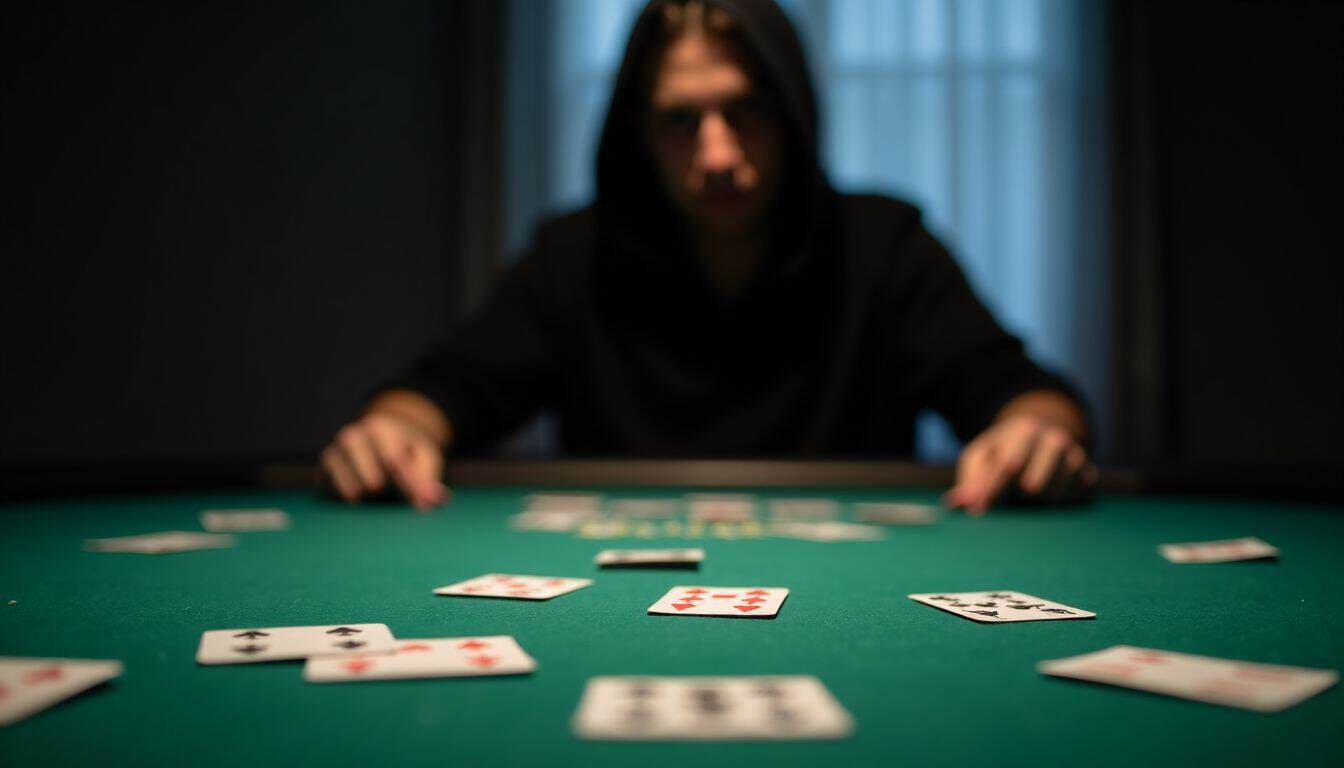
Good poker players create false tells to confuse opponents at the table. For example, you might fake nervous body language—such as tapping fingers or scratching your head—to pretend you have a weak hand.
Do this with marginal hands like suited connectors or low pocket pairs. This trick misleads others into thinking you’re unsure when your cards are decent, and lets you win more pots easily.
Keep an eye on each opponent’s reactions; you’ll quickly spot which players fall for these fake signals and who ignores them entirely. Mind your real body language so that genuine cues don’t give away hidden details about your actual hand strength.
How Will Poker Tells Evolve in 2025?
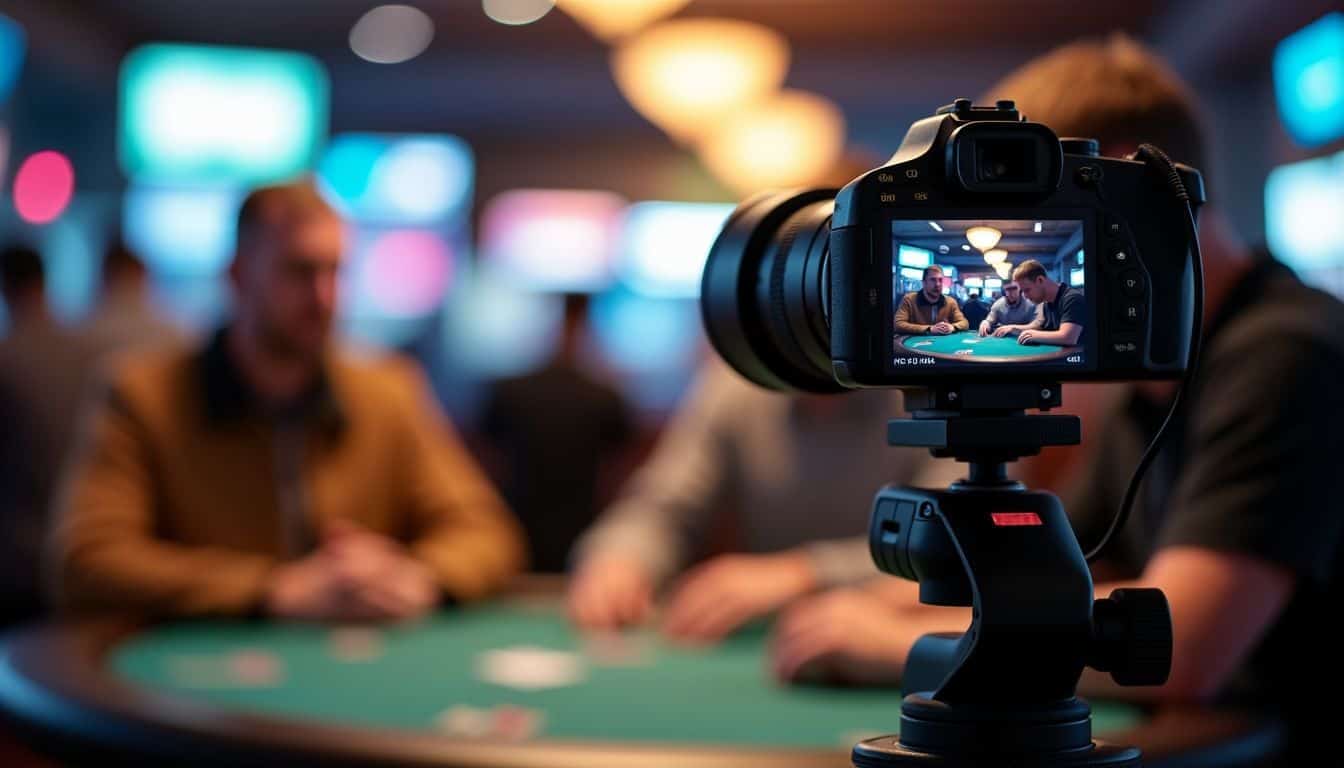
Poker tells are changing fast, and by 2025, technology will shift the way players read each other at the table. Cameras with advanced AI tools might soon track tiny eye movements or changes in heart rate to spot tension or excitement during a game.
Players who once relied on simple signs like sweaty palms or shaky hands must now adapt to reading betting trends and online poker habits instead of physical cues. With virtual gambling rooms becoming common, noticing delays in bets or sudden changes in play style could mean more than any twitch or nervous glance ever did.
To stay ahead—and maybe even host a poker night where your skills shine—learning these digital clues will become essential as old-style tells slowly fade away.
People Also Ask
What does it mean to “read people” in poker?
Reading people in poker means spotting clues—called tells—that players unknowingly show through body language, betting patterns, or facial expressions. Learning these signs helps you predict opponents’ moves and win big pots.
Why is knowing poker tells important for winning games in 2025?
Poker keeps evolving, and by 2025, players will likely become smarter at hiding their intentions. Knowing the latest poker tells gives you an edge—you can spot bluffs early, make better calls under pressure, and boost your chances of success.
Can beginners easily learn how to read people’s behavior during a game?
Absolutely! Even if you’re new to poker, learning basic player behaviors isn’t hard—it just takes practice and attention. Start with simple signals like nervous hand movements or sudden changes in betting style; soon enough you’ll confidently pick up more subtle cues too.
Are online poker tells different from live-game ones when reading opponents?
Yes—they differ quite a bit! In live games you watch physical actions like eye contact or chip handling; online play relies on timing patterns and bet sizing instead of visual hints. Mastering both types of tells prepares you fully for any kind of match-up you’ll face in 2025—and beyond!

